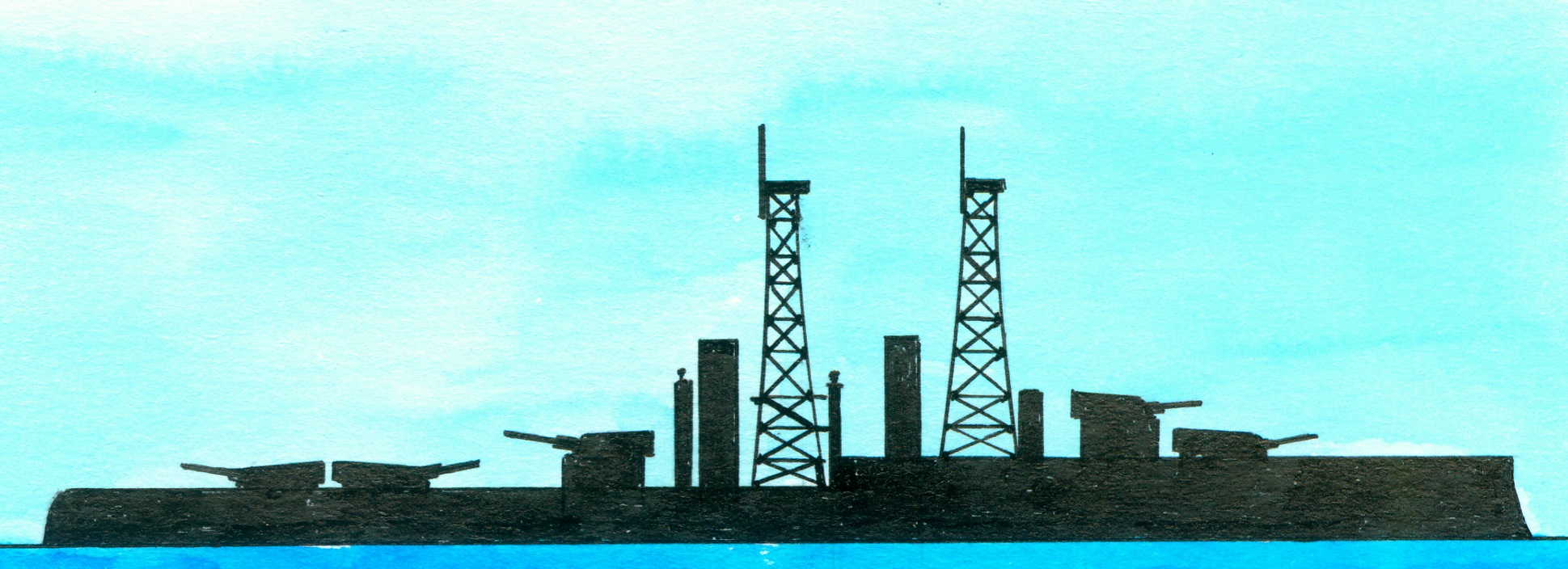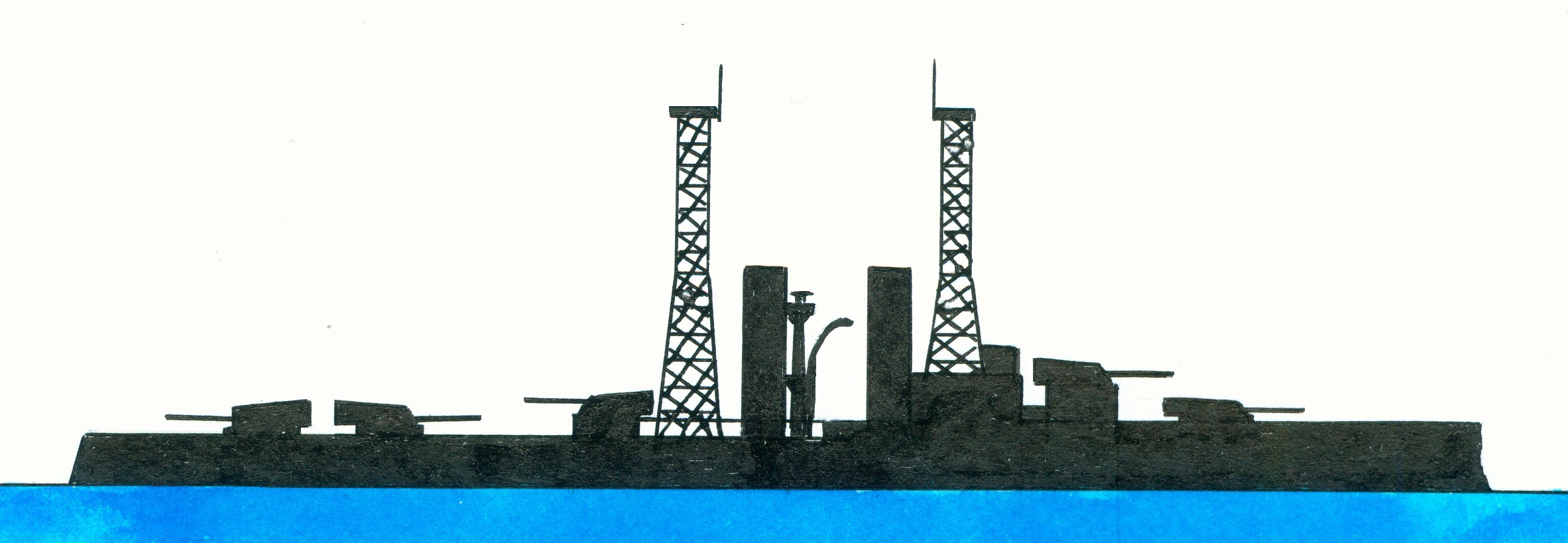Delaware-class
Florida-class
Wyoming-class
Of the Florida-class dreadnoughts consisting of the Florida and Utah, preceded by the Delaware-class and succeeded by the Wyoming-class. Ordered on 13 May 1908, laid down by the New York Shipbuilding Corporation, Camden, New Jersey, USA on 9 March 1909, launched on 23 December 1909, sponsored by Mary Alice Spry, commissioned on 31 August 1911, , modernized at the Boston Navy Yard(including adding torpedo bulges, replacing lattice masts by pole mast and adding a catapult) ) between 31 October 1925-1 December 1927, main and secondary armament removed and classified as target ship AG-16 on 1 July 1931, used for anti-aircraft gunnery training in 1939 and in 1941, sunk during the Japanese aircraft attack on Pearl Harbor, Hawaii near Ford Island on 7 December 1941, only one attempt to salvager and which failed, decommissioned on 5 September 1944, stricken on 13 November 1944 but her wreck was not removed and still partially visible being a National Historic Landmark since 9 July 1988.
Displacement 22.175 (standard)-23.043 (full load) tons and as dimensions 155,4 (waterline)-159 over all) x 26,9-32 (after modernisation) x 8,7 (mean)-9,2 (maximum) metres or 510-521.6 x 88.3-101 x 28.6-30.1 feet. The 4 Parsons steam turbines and 14 coal fuelled Babcock&Wilcox water tube boilers (reboilered 1925-1926 with 4 White-Forster oil-fuelled boilers) supplied via 4 screws 27.028 (trials)-28.000 (design) shp allowing a speed of 21 (design)-21,04 (trials) knots and with a speed of respectively 10 and 20 knots a range of 5.776 and 2.760 nautical miles. Coal bunker capacity 1.694 (standard)-2.560 (maximum) and a oil bunker capacity of 400 tons. Crew numbered 1.001 men. The armour consisted of a 22,9-27,9cm/9-11” thick belt, 3,8cm/1.5” thick decks with the lower casemate, upper casemate, barbettes, turrets and conning tower protected by respectively 20,3-25,4cm/8-1”, 12,7cm/5”, 10,2-25,4cm/4-10”, 30,5cm/12” (face) and 29,2cm/11.5”. The armament consisted of 5x2-30,5cm12” /45 Mark 5 guns, 16-12,7cm/5” /51 guns, 4-5,7cm/6pd/2.2” guns, 2-3,7cm/1pd/1.5” guns and 53,3cm/2-21” submerged torpedo tubes. In 1917 were 2-7,6xm/3” /23 anti aircraft guns added. In 1941 fitted out with new 12,7cm/5” 38 dual purpose guns in single mounts for the anti aircraft gunnery training. Originally was a main armament of 8-35,6cm/14” /45 guns planned but these were not available at the time.



